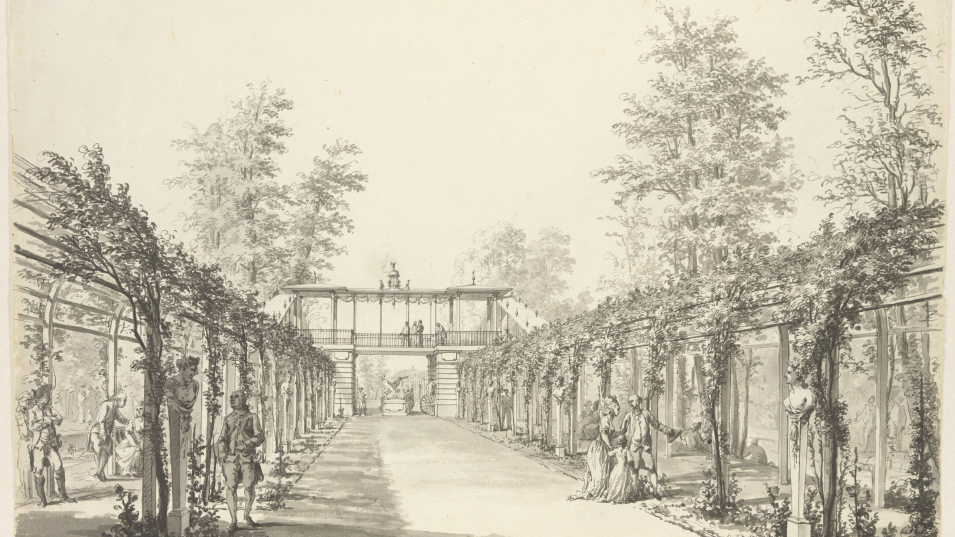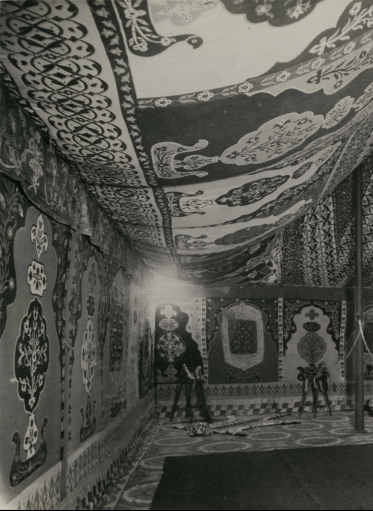Plant species
One of the main manifestations of Turkish influence are numerous plant species imported from the areas of the former Ottoman Empire since the 16th century. The most important of them are tulips, distinguished by their exceptional beauty and diversity. Imperial chessboards with flowers resembling a monarch’s crown were also popular. Mediterranean plants such as citrus fruits, fig trees and rosemary played an important role and were collected due to their wide use in medicine and cooking. At the exhibition, we present models of sixteen species of these plants that are still widely grown in Polish gardens.
Turkish tents
It is worth taking a look at the images of Turkish tents once displayed in the gardens of the palaces in Wilanów, Powązki and Puławy. They were brought to Poland as part of trade or as gifts or spoils of war. Due to their great value, tents were pitched in gardens temporarily, during the summer or on special occasions. During grand celebrations and outdoor performances, they evoked the atmosphere of the distant Orient. They were made by tent masters, using cloth, canvas and leather. The interiors of the tents were decorated with intricate patterns of silk threads, ribbons, embroidery and appliqués. The basic construction elements were shafts ending with spiers or ponytail buns, balls or crescents.
Garden structures
We also present the most interesting examples of pavilions designed by outstanding architects such as Szymon Bogumił Zug and Jan Chrystian Kamsetzer. In the 18th and 19th centuries, many garden buildings were built in Poland, referring to the motifs of Turkish architecture or the broadly understood oriental style. They were an expression of ideas about the architecture of the Middle East, inspired by travel reports and illustrated lexicons, patterns and catalogues. These include mosques and minarets, kiosks and baths. These structures were most often built over ponds or in places overlooking water, because the Ottoman Empire was perceived as a maritime state. They played an important role in the composition of the gardens, and were also used as observation points – places to admire particularly beautiful views as well as for relaxation and entertainment.
Additional information
The exhibition was prepared on the occasion of the 17th International Congress of Turkish Art (ICTA), co-organised by the Museum of King Jan III’s Palace in Wilanów and the University of Warsaw on 18–21 September, 2023.
The Museum of King Jan III’s Palace at Wilanów actively engages in activities for environmental protection and sustainable development, therefore most of the exhibition elements are made of environmentally friendly materials. After the exhibition ends, they will be reused by the Museum or recycled. Thanks to this, we will significantly reduce the consumption of natural raw materials and the amount of waste, and thus their negative impact on the environment.
The Museum of King Jan III’s Palace at Wilanów actively engages in activities for environmental protection and sustainable development, therefore most of the exhibition elements are made of environmentally friendly materials. After the exhibition ends, they will be reused by the Museum or recycled. Thanks to this, we will significantly reduce the consumption of natural raw materials and the amount of waste, and thus their negative impact on the environment.
Download the free publication accompanying the exhibition:
-
Organiser

-
Patrons

-

-

Co-financed by the Minister of Culture and National Heritage as part of the task “Co-financing the final part of the documentation and exhibition project, devoted to, among others, works of old manuscripts of Polish-Lithuanian Tatars”




